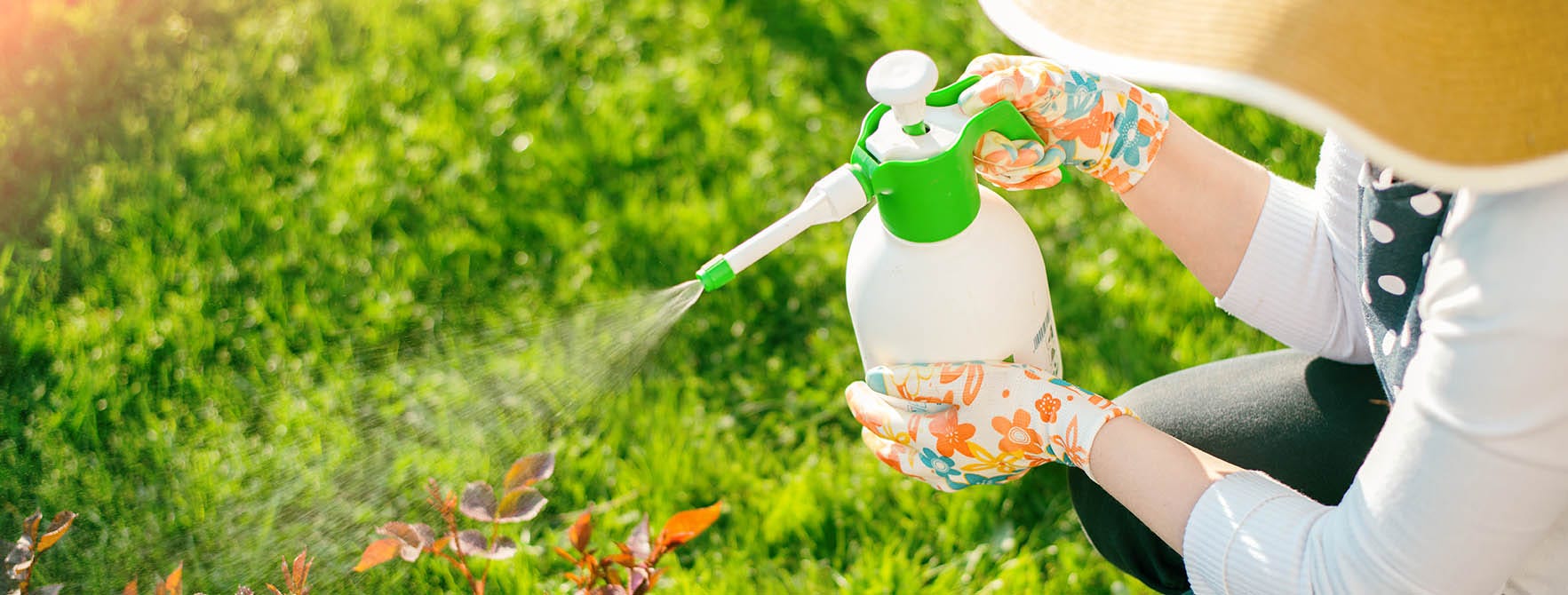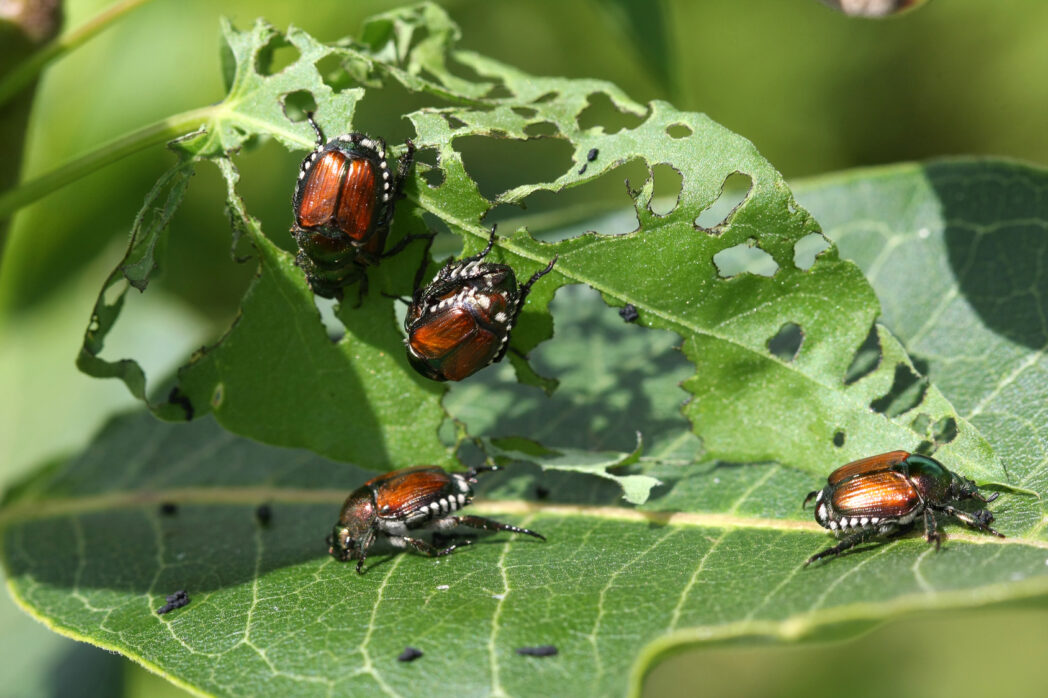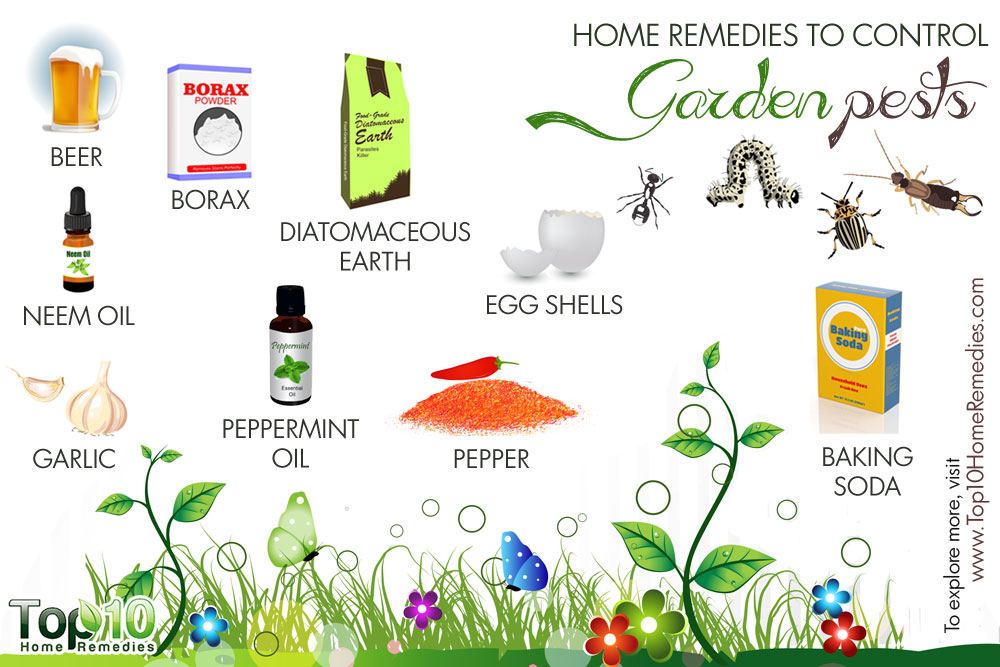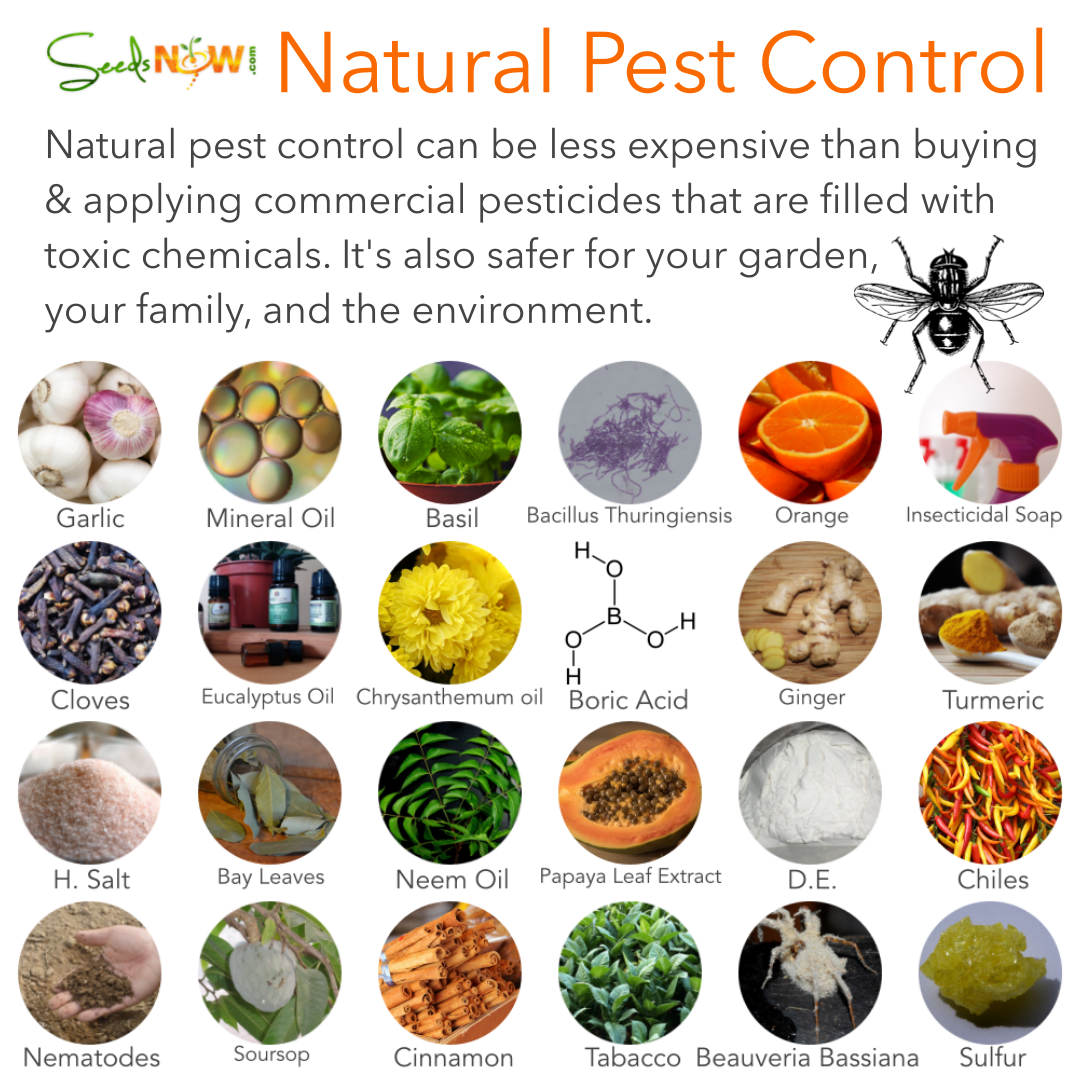Home-garden pest-control is a crucial aspect of successful gardening, transforming a potential battleground into a thriving ecosystem. From identifying those pesky aphids to mastering organic pest control methods, this guide unravels the secrets to protecting your precious plants. We’ll delve into the world of both natural and chemical solutions, equipping you with the knowledge to banish garden invaders and nurture flourishing blooms and bountiful harvests.
Get ready to become the ultimate garden guardian!
This comprehensive guide covers everything from identifying common pests like slugs and spider mites to implementing effective pest control strategies, both organic and chemical. We’ll explore preventative measures such as companion planting and soil health improvement, alongside reactive methods using insecticidal soaps, neem oil, and, if necessary, synthetic pesticides. Learn to recognize the signs of infestation, understand the life cycles of your enemies, and ultimately, cultivate a thriving, pest-free garden.
Common Home Garden Pests
Maintaining a thriving home garden often involves battling a variety of unwelcome guests. Understanding these pests, their life cycles, and preferred habitats is crucial for effective and sustainable pest management. This section will explore some of the most common culprits in temperate climates, providing insights into their behavior and damage.
Five Common Home Garden Pests in Temperate Climates
Temperate climates provide ideal conditions for a range of pests. Understanding their life cycles and habitats is key to effective control. Here are five common examples:
- Aphids: These tiny, pear-shaped insects reproduce rapidly, often colonizing the undersides of leaves. They feed by sucking plant sap, leading to stunted growth and leaf curling. Aphids undergo incomplete metamorphosis, developing through egg, nymph, and adult stages. Their preferred habitats are young, tender plant growth.
- Spider Mites: These microscopic arachnids are difficult to spot with the naked eye but leave behind telltale webbing on plants. They also feed on plant sap, causing stippling and yellowing of leaves. Spider mites reproduce quickly through eggs, which hatch into larvae, nymphs, and finally adults. They thrive in dry, warm conditions.
- Slugs: These mollusks are nocturnal, leaving behind glistening slime trails as they munch on leaves and stems. Slugs are hermaphrodites, meaning they possess both male and female reproductive organs. They lay eggs in damp soil, preferring shady, moist environments.
- Cabbage White Butterflies: These familiar butterflies lay eggs on cruciferous plants like cabbage and broccoli. Their larvae, or caterpillars, are voracious eaters, leaving behind large holes in leaves. The life cycle involves egg, larva (caterpillar), pupa (chrysalis), and adult stages. They prefer sunny areas with host plants.
- Japanese Beetles: These metallic green beetles are known for their skeletonizing feeding habits – they eat the leaf tissue between the veins, leaving a lacy pattern behind. Their life cycle involves egg, grub (larva), pupa, and adult stages. Grubs live in the soil, while adults feed on foliage. They prefer sunny areas with a variety of plants.
Comparing Damage Caused by Aphids, Spider Mites, and Slugs
Aphids, spider mites, and slugs, while differing in size and appearance, all cause significant damage to plants. However, the nature of the damage varies considerably.Aphids cause stunted growth and leaf curling due to their sap-sucking habits. Visual indicators include clusters of small insects on leaves, often accompanied by sticky honeydew (excrement). Spider mites cause stippling and yellowing of leaves, and their presence is indicated by fine webbing on the plant.
Slugs, on the other hand, create irregular holes and chewed edges on leaves and stems, leaving behind a characteristic slime trail.
Common Garden Pests: Damage, Habitat, and Natural Control, Home-garden pest-control
Understanding the specific damage caused by different pests allows for targeted control measures. The table below provides a summary of common garden pests, their damage type, preferred habitats, and natural control methods.
| Pest | Damage Type | Preferred Habitat | Control Method (Natural) |
|---|---|---|---|
| Aphids | Sap sucking, stunted growth, leaf curling | Young, tender plant growth | Ladybugs, insecticidal soap |
| Spider Mites | Stippling, yellowing, webbing | Dry, warm conditions | Water spray, predatory mites |
| Slugs | Chewed leaves and stems, slime trails | Damp, shady areas | Diatomaceous earth, beer traps |
| Cabbage White Butterflies | Holes in leaves (caterpillars) | Cruciferous plants | Handpicking caterpillars, netting |
| Japanese Beetles | Skeletonized leaves | Variety of plants, sunny areas | Handpicking, neem oil |
| Whiteflies | Sap sucking, yellowing, sticky honeydew | Undersides of leaves | Yellow sticky traps, insecticidal soap |
| Colorado Potato Beetles | Leaf consumption | Potato plants, other nightshades | Handpicking, Bacillus thuringiensis |
| Flea Beetles | Tiny holes in leaves | Various plants, especially brassicas | Row covers, insecticidal soap |
| Earwigs | Chewed leaves, flowers, and fruits | Moist, dark areas | Traps, handpicking |
| Grasshoppers | Chewed leaves and stems | Grassy areas, gardens | Handpicking, barriers |
Organic Pest Control Methods

Organic pest control prioritizes ecological balance and minimizes the use of harmful chemicals. It relies on natural methods to manage pest populations, protecting both your plants and the environment. Effective organic pest control involves a multi-pronged approach, combining preventative measures with targeted interventions as needed.
Companion Planting for Pest Deterrence
Companion planting leverages the synergistic relationships between different plant species to deter pests. Certain plants emit odors or produce compounds that repel insects, while others attract beneficial insects like ladybugs that prey on common garden pests. Successful companion planting requires careful consideration of plant pairings and their respective effects. For instance, planting basil near tomatoes can deter tomato hornworms, while marigolds interspersed throughout the garden repel nematodes and other soil-borne pests.
The mechanism often involves the release of volatile organic compounds from the companion plant, disrupting the pests’ olfactory senses or making the target plant less attractive. Other pairings include planting garlic near roses to deter aphids and planting nasturtiums near brassicas to distract flea beetles.
Insecticidal Soaps and Neem Oil Applications
Insecticidal soaps and neem oil are effective organic pesticides that work by disrupting the pests’ cell membranes or interfering with their life cycles. Insecticidal soaps are best used against soft-bodied insects like aphids and spider mites. They should be applied directly to the pests, ensuring thorough coverage. Precautions include avoiding application during the hottest part of the day to prevent plant damage and using a protective spray mask and gloves.
Neem oil, derived from the neem tree, acts as a natural insecticide, fungicide, and miticide. It disrupts insect hormone regulation, preventing them from developing and reproducing. Application involves diluting the neem oil according to the product instructions and spraying thoroughly, ensuring coverage of both the upper and lower leaf surfaces. Similar precautions, such as avoiding midday application and wearing protective gear, should be followed.
Organic Pest Control Plan for a Vegetable Garden
A proactive organic pest control strategy combines preventative measures with reactive responses. This approach ensures a healthy garden while minimizing the use of harsh chemicals.
Maintaining a pest-free home garden requires diligence, but sometimes, you need a break from the constant battle! Imagine escaping to a tranquil oasis, like one of the luxury hotels with breathtaking views and exceptional amenities worldwide , where you can relax and recharge. Returning refreshed, you’ll be ready to tackle those pesky garden invaders with renewed energy and effective strategies.
- Preventative Measures: Maintain garden hygiene by regularly removing weeds and debris. Rotate crops annually to disrupt pest life cycles. Practice crop rotation to reduce pest build-up. Choose pest-resistant varieties of vegetables whenever possible. Use row covers to protect seedlings from pests.
Mulch around plants to regulate soil moisture and temperature, discouraging pest development.
- Reactive Strategies: Regularly inspect plants for signs of pest infestation. Handpick and remove visible pests. Introduce beneficial insects, such as ladybugs or lacewings, to control pest populations. Use insecticidal soap or neem oil as needed, targeting specific pests. Employ companion planting strategies to deter pests naturally.
If pest infestations become severe despite these measures, consider consulting a local gardening expert for further guidance.
Chemical Pest Control Methods (if necessary): Home-garden Pest-control

Chemical pest control, while effective, should be a last resort in home gardening, employed only when organic methods prove insufficient. Understanding the types of chemicals, their effects, and safe application is crucial to minimizing risks to human health, the environment, and beneficial insects. Improper use can lead to serious consequences, highlighting the need for careful consideration and responsible application.Chemical pesticides are broadly categorized by their mode of action – how they affect the pest.
Some target the nervous system, others disrupt hormone function, while still others act as contact poisons. Each category presents unique risks and benefits, requiring a discerning approach.
Types of Chemical Pesticides and Their Modes of Action
Chemical pesticides come in various forms, each with a specific target and method of action. Insecticides, for instance, target insects, while herbicides tackle weeds. Fungicides combat fungal diseases, and nematicides target nematodes. These pesticides can be further classified by their chemical composition, including organophosphates, carbamates, pyrethroids, and neonicotinoids. Organophosphates, for example, inhibit an enzyme crucial for nerve function in insects, leading to paralysis and death.
Carbamates have a similar mode of action, while pyrethroids interfere with nerve impulse transmission. Neonicotinoids, known for their systemic action (absorbed by the plant and toxic to insects that feed on it), are increasingly controversial due to their potential impact on pollinators.
Dealing with pesky aphids in your herb garden? Sometimes, you need a little escape from the everyday grind. Check out this ultimate guide to the world’s best luxury hotels for solo travelers for some much-needed relaxation before tackling that stubborn infestation. Then, armed with renewed energy, you can conquer those garden pests with homemade remedies and a fresh perspective.
Effectiveness and Environmental Impact of Synthetic vs. Natural Pesticides
Synthetic pesticides generally offer faster and more immediate results than natural alternatives. However, this effectiveness comes at a cost. Synthetic pesticides can persist in the environment for extended periods, potentially contaminating soil and water, harming non-target organisms, and building up in the food chain (bioaccumulation). Natural pesticides, derived from plants or other natural sources (like neem oil or insecticidal soap), are generally considered less persistent and less harmful to the environment.
However, their effectiveness can be less consistent and require more frequent applications. The long-term consequences of synthetic pesticide use include potential resistance development in pest populations, requiring stronger and potentially more harmful chemicals over time. Natural alternatives, while safer, may not provide the same level of immediate control, potentially allowing pest populations to increase before effective control is achieved.
For example, a monoculture garden might require more frequent applications of natural pesticides compared to a diverse garden where natural pest control mechanisms are at play.
Safe Application of Chemical Pesticides
Safe and responsible application of chemical pesticides is paramount. This involves meticulous adherence to label instructions, including dosage, application method, and safety precautions.
- Personal Protective Equipment (PPE): Always wear appropriate PPE, including gloves, eye protection, a respirator (especially with dust or spray formulations), and protective clothing. Never apply pesticides without adequate protection.
- Application Techniques: Follow the label instructions precisely regarding application method (spraying, dusting, granular application). Avoid spraying on windy days or when rain is imminent, as this can lead to drift and reduced effectiveness.
- Target Application: Aim to apply the pesticide directly to the target pest or affected area, minimizing contact with other plants or surfaces.
- Post-Application Cleanup: Clean all equipment thoroughly after use. Dispose of leftover pesticides and containers according to local regulations.
- Storage: Store pesticides in a secure, locked location, out of reach of children and pets.
Pest Prevention Strategies

Proactive pest prevention is far more effective and less harmful to your plants and the environment than reactive pest control. By focusing on preventative measures, you can significantly reduce the need for pesticides and create a thriving, healthy garden. This involves understanding the interconnectedness of your garden’s health and its susceptibility to pests.Proper garden sanitation plays a crucial role in preventing pest infestations.
Cleanliness disrupts the pest life cycle, removing food sources and breeding grounds. Healthy soil, in turn, fosters strong, resilient plants less vulnerable to pest attacks. Finally, strategic planting practices like crop rotation can help manage pest populations over time.
Garden Sanitation
Maintaining a clean garden environment is paramount in preventing pest infestations. Regular removal of weeds, fallen leaves, and plant debris eliminates hiding places and food sources for many pests. Weeds, in particular, often harbor pest eggs and larvae. Thoroughly cleaning up after harvesting is essential, removing any leftover plant material that might attract pests. Regularly inspect plants for signs of infestation and promptly remove any affected parts.
Composting is a great way to dispose of plant debris, but ensure your compost pile is managed properly to prevent pest build-up; avoid adding diseased plants. For tools, cleaning with soapy water after each use prevents the spread of diseases and pests.
Soil Health and Pest Resistance
Healthy soil is the foundation of a pest-resistant garden. Nutrient-rich soil supports strong plant growth, making plants more resilient to pest damage. Plants that are stressed due to nutrient deficiencies are more susceptible to pests. Improving soil quality involves several practices: adding compost or other organic matter to increase soil fertility and improve drainage, regularly testing soil pH and adjusting as needed to optimize nutrient uptake, and practicing cover cropping to improve soil structure and add nutrients.
Healthy soil also promotes beneficial microorganisms that compete with harmful pests. Avoid using chemical fertilizers, which can disrupt soil ecosystems and weaken plants.
Crop Rotation’s Impact on Pest Populations
Crop rotation is a powerful tool for managing pest populations. By changing the types of plants grown in a particular area each year, you disrupt the life cycle of many pests. Imagine a three-year cycle:Year 1: Tomatoes (susceptible to tomato hornworms).Year 2: Legumes (peas or beans) – these plants don’t attract tomato hornworms.Year 3: Leafy greens (lettuce or spinach) – different pests, different life cycles.This simple rotation disrupts the hornworm’s ability to thrive, reducing their numbers significantly.
The visual representation would show three distinct sections, each representing a year. The first section would show numerous tomato hornworms thriving amongst the tomato plants. The second section would show a drastically reduced number of hornworms with the legumes, indicating a lack of suitable host plants. The third section would show a similar low number of hornworms, with a different set of pests affecting the leafy greens.
This demonstrates how crop rotation breaks the pest cycle and prevents a build-up of specific pest populations. The visual emphasizes the significant decrease in tomato hornworms after the first year of rotation. A similar approach can be used with other pests and crop combinations. Effective crop rotation requires planning and knowledge of the pest life cycles of the plants you are growing.
Identifying Pest Infestations

Early detection is crucial for effective pest control in your home garden. Ignoring early signs can lead to widespread damage and a significant reduction in your harvest. Recognizing the subtle indicators of pest activity is the first step towards protecting your plants. This involves understanding the specific visual symptoms associated with various pests and employing accurate identification methods.Identifying the culprit behind your garden’s woes requires a keen eye and a systematic approach.
By carefully observing your plants and understanding the behavior of common pests, you can effectively diagnose infestations and implement appropriate control measures.
Visual Symptoms and Identification Methods
The following table provides a detailed overview of common pest infestations, highlighting visual symptoms and methods for accurate identification. Accurate identification is paramount to selecting the most effective control method.
| Plant Type | Pest | Visual Symptoms | Confirmation Methods |
|---|---|---|---|
| Leafy Vegetables (e.g., lettuce, spinach) | Aphids | Small, soft-bodied insects clustered on leaves, stems, and buds; leaves may be curled or distorted; sticky honeydew present. | Close visual inspection; magnifying glass to observe details; check for honeydew on lower leaves. |
| Tomatoes | Tomato Hornworms | Large, green caterpillars with a horn-like projection on their rear end; significant leaf defoliation; large droppings present. | Direct observation; look for characteristic markings and size; check for frass (caterpillar droppings). |
| Roses | Rose Slugs | Skeletalized leaves (only the veins remain); slimy trails; small, dark, slug-like larvae present. | Careful examination of leaves; search for larvae; look for characteristic feeding patterns. |
| Fruit Trees (e.g., apple, pear) | Codling Moths | Wormy fruit; small holes in fruit; presence of larvae inside the fruit. | Cut open affected fruit to inspect for larvae; look for exit holes; monitor for adult moths. |
| Flowering Plants (e.g., petunias, zinnias) | Spider Mites | Fine webbing on leaves; stippling (tiny white spots) on leaves; leaves may appear bronzed or yellowed. | Use a magnifying glass to observe mites; check for webbing; look for characteristic stippling. |